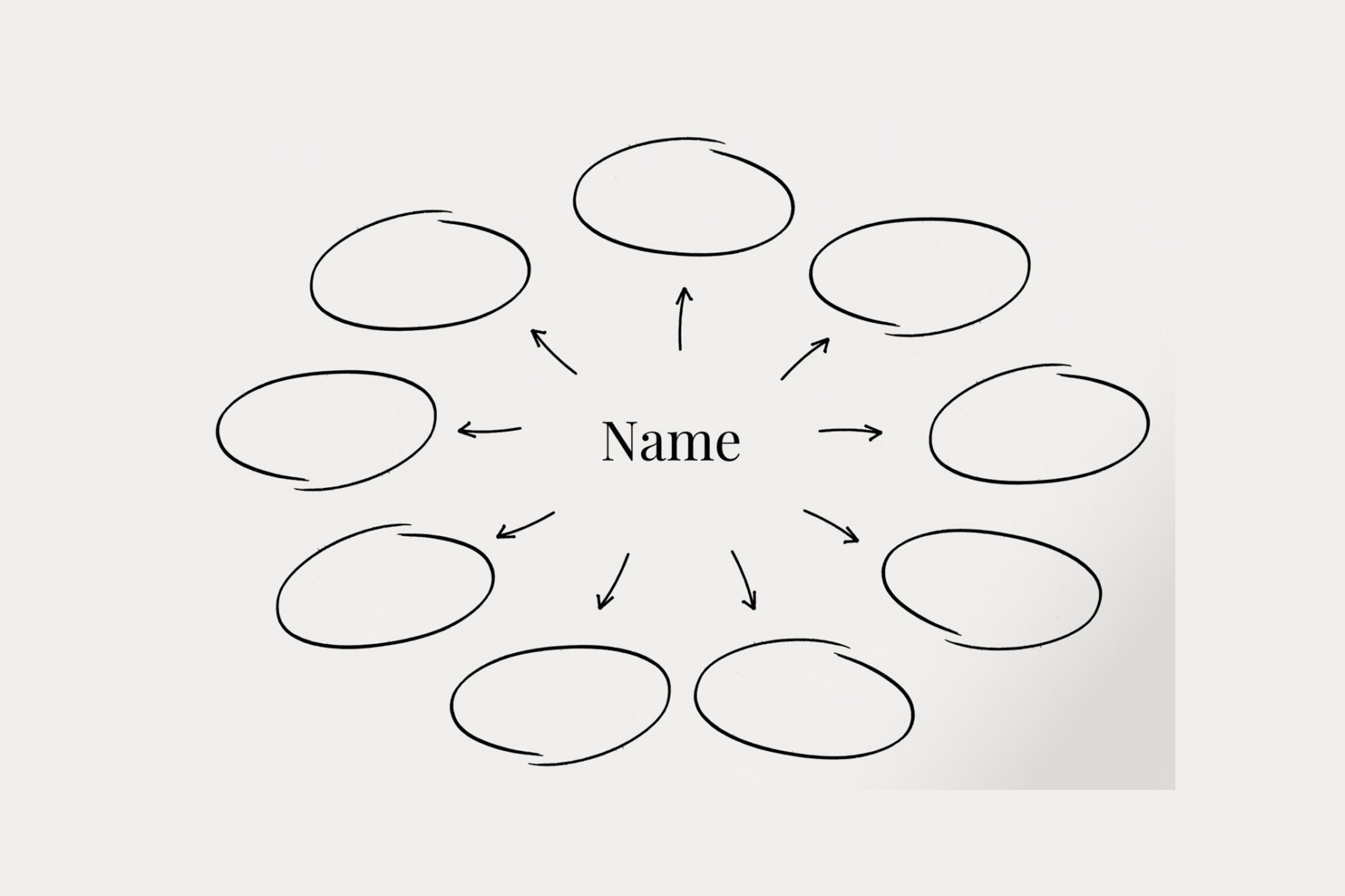What is an Ecomap?
An Ecomap is a visual tool we can use with children and families to show and understand the different relationships they have at a personal and social level. Unlike genograms, which focus on family relationships, Ecomaps include a much broader range of social and support networks. They are a strengths-based piece of work that is most powerful when completed with an individual or family.
Completing an Ecomap can help to build the relationship between you and the child/family you are working with as it promotes working together through discussion and exploration to identify current support in place and the strength of existing relationships. They are also particularly useful when working with children or young person as it can help hem to identify the type of support they want or need. Often, young people may feel alone or isolated, but an Ecomap can help them to understand who is already around them for support. It also highlights areas where support may be lacking, which can then help practitioners with early planning and interventions.
Why use an Ecomap?
ANALYSE RELATIONSHIPS
This visual tool helps to examine the nature and intensity of various relationships which extend beyond just family connections.
IDENTIFY SUPPORT AND STRESS SOURCES
Ecomaps can make it clear where support or stress sources can be found and highlight positive and negative influences which may not have been previously identified.
PROVIDE OVERVIEW OF LIVED EXPERIENCE
Ecomaps offer a wide-ranging view of a child, young person or family’s interactions with their surroundings and overall engagement with their external environment.
ENABLE CUSTOMISED INTERVENTION
Ecomaps help to identify areas needing more resources or support and check for any overlap in services to ensure efficient assistance.
Creating an Ecomap
• Place the child or family who are the focus of the Ecomap in a large circle at the centre of a page.
• Place smaller circles surrounding the larger circle to represent different relationships. This could be family members, friends, groups, organisations or other relevant factors or people in an individual’s life.
• Use lines to connect the smaller circles to the centre circle. Different lines are used to show the nature of the connections and the thickness of the line can be used to show the intensity of a relationship.
• Place arrows at the end of the lines to show how the influence goes. Double-ended arrows show mutually supportive relationships, whereas single-ended arrows point from one person to another to show that one person is giving more support or influence in the relationship.
• Short descriptions or phrases may be added beside lines or circles to explain, clarify or emphasise information on the Ecomap.
•Date when completed for future reference.
• Ecomaps are a dynamic tool and should be regularly updated to reflect any significant changes since the last review.
Relationships to consider
A child, young person or family may identify some or all of the following types of relationship:
FAMILY
Immediate and extended family, including parents, grandparents, siblings, and other known relatives.
FRIENDS & PEERS
Close friends, acquaintances and other peers that may have a role in the child or family’s social life, either in a positive or negative way.
EDUCATION
Teachers, class mates, support staff or other professionals that may indicate the individual’s engagement in an educational setting.
MEDICAL & HEALTHCARE PROVIDERS
Universal services such as GP surgeries, midwives or dentist could be identified as well as more specialised services such as therapists or paediatricians (if applicable).
LOCAL COMMUNITY RESOURCES
Local support groups, clubs or organisations that they may attend regularly, e.g. Family Hubs groups.
SPIRITUAL OR CULTURAL CONNECTIONS
Religious leaders or groups, places of worship or cultural groups they may attend.
WORK
Colleagues, line managers or supervisors which again may indicate the individual’s engagement in their work setting (if applicable).
SUPPORT SERVICES
Any professionals that may be providing a service or support, e.g. a social worker or youth intervention officer.
RECREATIONAL ACTIVITIES
Clubs, sports teams or hobbies they may participate in.
NEIGHBOURHOOD AND LOCAL COMMUNITY
People in the neighbourhood who may have an influence or relationship with the child/family.
ONLINE/DIGITAL CONNECTIONS
Online communities, social media connections and digitial platforms may play a part or influence a child or family’s social network.
OTHER
As we know, each family is unique and therefore they may also identify others not listed here that they feel makes a significant contribution to their social life.

Try doing your own
As a reflective exercise, you may like to try creating your own Ecomap as it may help you experience the process and understand the emotions involved when examining your social networks in this way. This can be a powerful process so please do think about when may be a good time to do this and who you could have a conversation with after if it raise any issues for you.

